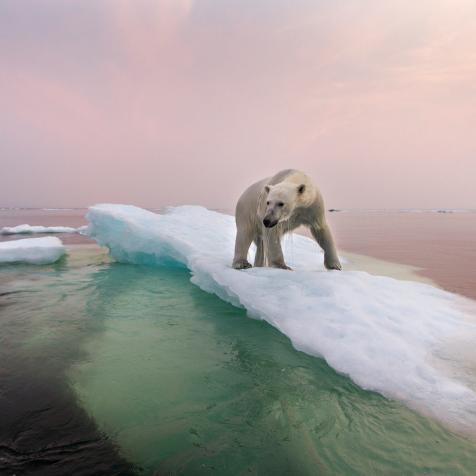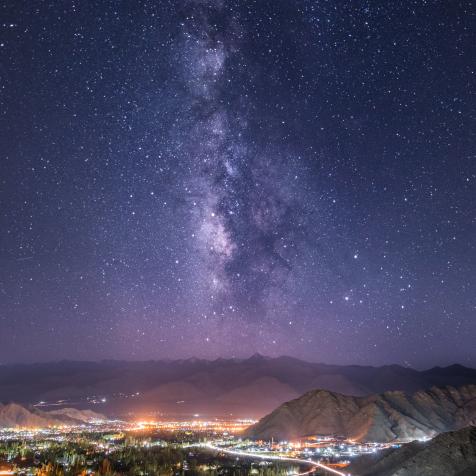
GettyImages/ertyo5
How to Make Art and Alienate Pollution
Painting in a time of climate crisis.
In the winter, New Delhi looks like the something from the sets of a Black Mirror episode. Last year, clips were making the rounds of a series of accidents on the Yamuna Expressway between NOIDA, a city outside New Delhi that is part of the National Capital Region and the city of Agra. The air was so thick with smog and pollution that when one car stalled, subsequent cars could not tell until it was too late. Similar accidents were reported across the region. The visibility was like a cloud of smoke from a chimney had descended onto the highway.
Photos
See All PhotosSchools are now routinely shut for a few days just after Diwali, the festival of light (and crackers), warnings are issued for people to stay indoors as much as possible, and pollution counters sometimes cannot even seem to display the actual count, which has crossed the threshold they were built to measure. Walking out of your house without a pollution mask is greeted with clicks of the tongue.
In a recent report conducted by AirVisual and Greenpeace, it emerged that 18 out of the 20 most polluted cities in the world were from the Indian subcontinent. To study this, the groups had set up tens of thousands of air quality monitoring stations around the world to calculate the quantity of PM2.5. Particulate Matter 2.5 (PM 2.5) is anything suspended in the air that is less than 2.5 micrometers —something the human eye has no chance of seeing on its own, and human lungs have no capacity to filter.
According to the World Health Organization, air pollution is responsible for the deaths of up to seven million people each year, and the effects of over-exposure to PM2.5 include irregular heartbeats, aggravated asthma, and lung problems—including cancer. In India specifically, The Global Burden of Disease Study 1990–2016 found that air pollution is responsible for over double the number of cases of chronic obstructive pulmonary disorder than smoking. The Berkeley Earth science research group went so far as to equate breathing in Delhi’s air to smoking 44 cigarettes in a day.
Some initiatives have made a small step towards resolving India’s pollution problem: banning fireworks at certain times, growing plants that are able to keep the air in office spaces as clean as possible, and compulsory emission tests on trucks and cars—thought to be some of the leading contributors of pollution. One group of Indian entrepreneurs took it one step further, by turning the problem of pollution profitable. They set up a company that converts PM2.5 particles into ink and paints. “We can’t claim that our ink will solve the world’s pollution problem, but it does show what can be done if you look at this problem slightly differently,” says Anirudh Sharma the founder of the Delhi-based Graviky Labs.
Anirudh was a student at MIT and was on holiday in India in 2012 when he took a photograph of a generator belching out carbon fumes. A beautiful triangular pattern formed on the wall behind the generator, which made him make the connection. When he went back to his lab in the US, Anirudh used DIY materials he could find around a college campus, including a candle and a bottle of vodka, and realized he was able to capture the soot that the burning flame produced.
This soot is not very different in composition to black ink - which at the moment is mostly produced by burning fossil fuels in factories. His young company now aims to cut emissions from the production of such ink and collect it directly from readily-available sources like car exhaust and machines. He tested carbon collectors on cars and engines in various shapes and forms—he even drove with a massive metallic contraption strapped around and over a car across Bangalore city. “Without affecting the performance of the engine, we are able to capture 95% of the pollution released from the generator,” he says. At the moment, their prototype called Kaalink (which is an amalgamation of the Hindi word for ‘black’ and the word ‘ink) can be designed to fit diesel generators and other fossil fuel chimney stacks.
And this process has created art. Their ink pens (which hold processed soot collected from a car engine in between just 40 and 130 minutes) have been used to make murals all around the world—many in protest against the current levels of air pollution around the world. They hope it will start a revolution. There could be hope as Anirudh’s company has begun receiving sacks of PM2.5 at their doorstep and images in their inboxes from people around the world with questions about what they can do. All the carcinogenic material they are now considering buying as raw material would otherwise most likely end up in rivers or landfills and making their way back into the system.
















.jpg.rend.hgtvcom.476.476.suffix/1567785339053.jpeg)




